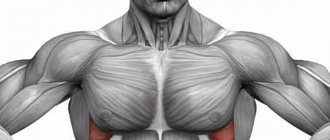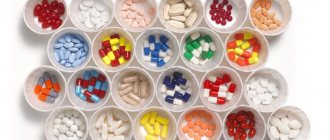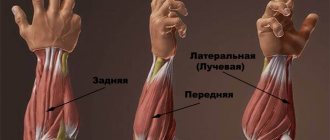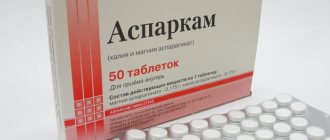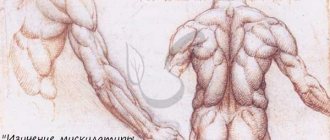With intense physical activity, the human body expends a lot of energy, a huge amount of nutrients, microelements, and vitamins. In order to make up for these costs and get results from training, the body needs intensive nutrition and support. Therefore, people involved in sports have a certain diet, rest, and sleep. There are also a number of pharmaceutical drugs for recovery after training and maintenance during physical activity.
- Metabolic drugs
- Complexes of microelements and vitamins
- Nootropic drugs
- Chondroprotective drugs
- Amino acids and complex protein preparations
Mildronate
Mildronate (meldonium) is one of the sensational drugs that is undeservedly included in the list of prohibited “doping” drugs. Although it is prescribed from childhood to the elderly. This is a very powerful cardioprotector. During training, the load on the heart and blood vessels increases tenfold. It is a very powerful metabolic drug. Mildronate protects the heart from oxygen starvation, increases the overall tone and endurance of the body. Therefore, this drug is indispensable for sports. It is available in capsules and injection solutions. Prescribed for a long course. Before calling it a “doping” drug, it should be noted that it is prescribed even to very weakened patients.
Kapikor
Kapikor is a complex metabolic drug, which also includes meldonium and gamma-butyrobetaine dihydrate. During training, this drug protects not only the heart and blood vessels from oxygen starvation, but also brain tissue. Used in capsules in individually selected courses.
Contraindications for both mildronate and capicor are: individual intolerance to the components of the drug, increased intracranial pressure and severe renal failure. Both the first and second are usually very well tolerated.
Elkar
Elkar is a unique drug for athletes. It improves protein metabolism, enhances fat burning, thereby releasing energy. Reduces excess weight. Burns excess fat in muscle tissue. At the same time, it improves enzyme formation. Normalizes general metabolism. Increases the overall tone of the body and resistance to physical stress. It also promotes speedy recovery after intense training. The action is somewhat similar to B vitamins. Available in drops and granules. During prolonged physical activity, the prescribed dose varies from 2.5 ml (1/2 measuring spoon) 3 times a day half an hour before meals to 2.25 g (1.5 ml).
The only contraindications are individual intolerance, which is extremely rare.
Pathological athlete's heart
In the United States, they keep a special register where the death of an athlete is celebrated every third day, and mostly football players die - a kind of American football is “densely implicated” in rugby. We do not have such records, but all death cases are widely covered by the press; Russian athletes clearly die much less often. The cause of their death is, as a rule, a pathological sports heart, which is formed by unsystematic extreme loads, doping, training against the background of banal infections and, of course, genetic characteristics.
The mass and thickness of the walls of the heart in this situation are also greater than normal, but due to the lag in the growth of coronary capillaries from the increase in the myocardium itself, its nutrition is disrupted. The muscle is less elastic, so contractility suffers and, therefore, maximum relaxation at rest is impossible. The volume of not only the ventricles that eject blood increases, but also the volume of the atria that receive blood. The volume of the heart is increased, but much more than it should be - more than 1200 cubic centimeters.
Also, the heart rarely contracts, bradycardia occurs. It can be more pronounced, that is, less than 40 contractions per minute, especially at night, which leads to severe oxygen starvation of the brain. With a normal athletic heart, the athlete does not feel a slow heartbeat in any way; when bradycardia is accompanied by clinical symptoms, then this is no longer a normal adaptation of the heart to high loads, but a pathological condition. Decrease in blood pressure below 100/60 mmHg. in such a situation, it is also not an adaptation of the body, but a reaction to painful changes.
Riboxin
Riboxin is an anabolic drug. It is a precursor to the substance ATP, which gives cells energy. Riboxin has a cardioprotective effect, that is, it protects the heart muscle and its cells - cardiomyocytes - from oxygen starvation. During physical activity, this is very important, since oxygen consumption by heart cells increases sharply. Available in tablet and injection form. In sports, the tablet form is more often used. Prescribed 1 tablet 3-4 times a day before meals. It is generally well tolerated.
Contraindications: individual intolerance and renal failure.
How to strengthen the heart of bodybuilders?
Strength training has a great impact on the functioning of the cardiovascular system. However, the opinions of doctors differ in many respects. So, many argue that it is bodybuilding that has a negative effect on the functioning of the heart. Firstly, this is caused by heavy loads, secondly, myocardial hypertrophy without vascularization, and thirdly, the constantly elevated blood pressure of athletes after physical activity leads to the development of heart failure.
At the same time, there is another opinion. Modern research proves that bodybuilding only has a positive effect on the functioning of the heart. But in any case, prevention and strengthening the heart are necessary for everyone, especially athletes. Today we will look at drugs that strengthen the heart of bodybuilders.
Let's start with the fact that not everyone can engage in bodybuilding. Athletes for whom strength training is contraindicated include people with high blood pressure, heart failure, aneurysm, myocarditis, arrhythmia and tachycardia. In addition, if a person has coarctation of the aorta, mitral valve prolapse, or valve insufficiency with regurgitation, then strength training is also contraindicated.
However, there are cases when absolutely healthy bodybuilders begin to notice that their normal heart rate increases, interruptions in the work and heart begin, and pain in the heart area begins. This suggests that the first signs of pathological changes in the heart are observed. In such cases, you must immediately consult a doctor for diagnosis. Remember that any disease, especially heart pathology, is easier to prevent and prevent than to treat.
Drugs to strengthen the heart of bodybuilders.
- Riboxin. Thanks to this remedy, oxygen supply to the heart is enhanced. Riboxin is also necessary to improve blood supply, normalize heart rhythm and strengthen the myocardium. For athletes, this cardiovascular remedy will also be useful because it enhances protein synthesis in the muscles and has a positive effect on energy processes in the heart. Riboxin should be taken for 1 to 4 months, 3-4 times a day before meals;
- Trimetazidine is better known as Preductal, but this brand is more expensive. This drug is necessary to protect the heart, normalize heart metabolism and improve heart nutrition at the cellular level. Take 35 mg for 15-30 days with meals 2 times a day;
- Asparkam is a drug that is based on a compound of magnesium and potassium. Quite popular among bodybuilders. Askarkam is used to reduce heart rate, eliminate seizures, and reduce the manifestation of arrhythmia. As an additional effect, the functioning of the gastrointestinal tract improves. It is necessary to take a course of taking Asparkam 3 times a day after meals for 1 month;
- The most popular and broad class of adrenomimetic drugs are beta blockers. Bisoprolol and Metoprolol are recognized as the most effective. They help eliminate overload, lower blood pressure, and normalize the pulse so that it does not exceed the physiological norm. When using fat burners or anabolic steroids, the load on the heart increases, which causes myocardial hypertrophy. The use of beta blockers helps prevent this. Bodybuilders note that after regular use of beta blockers, the pulse normalizes and overall health improves. In addition, this remedy increases life expectancy, as it reduces the risk of the most common heart diseases. However, this drug is not recommended for use without a doctor’s recommendation, so be sure to consult a specialist, as there are contraindications.
There are also herbal preparations to strengthen the heart, which are prescribed to athletes for prevention and treatment.
Hawthorn reduces heart rate, increases coronary blood flow, and dilates blood vessels in the brain and heart. Cardiac strength also increases. Hawthorn extract is also useful for bodybuilders because it normalizes sleep, relieves nervous excitement and reduces cholesterol levels in the blood.
Rhodiola rosea is the most effective herbal preparation that improves heart function. This herbal adaptogen improves cardiac contractility. The medicinal properties of Rhodiola rosea have a tonic effect on the entire body; regular consumption of herbal tea from Rhodiola has a positive effect on the size of cellular mitochondria, which are necessary for oxygen respiration of cells.
Actovegin
Actovegin is a drug that improves the trophism of all tissues in the body. This happens due to the fact that:
- It improves microcirculation in peripheral vessels, that is, blood circulation.
- It is a neuroprotector, that is, it restores and “nourishes” nerve cells and fibers by improving microcirculation.
- It is a metabolic agent and improves energy metabolism in tissues. Due to the utilization of glucose, it reduces the accumulation of lactate levels in muscle tissue, which makes it possible to quickly restore muscle tissue after increased exercise.
- It is an antihypoxant, that is, a drug that supplies tissues with oxygen.
Available in solutions for injection. It is administered intramuscularly, intravenously, intraarterially. Preventively prescribed intramuscularly, 2 ml once a day. If a stronger effect is needed, then the prescription should be intravenous.
Contraindications: individual intolerance to the drug, severe diseases of the lungs, heart and kidneys, which, as a rule, are not observed in athletes.
L-carnitine
As with CoQ10, carnitine levels are lower in cardiac patients and supplementation may be beneficial. Carnitine is involved in transporting fats into the mitochondria, where they are used as fuel for the heart muscle. The most promising study examined the effect of carnitine in conditions involving tissue hypoxia, in particular myocardial ischemia. As it turned out, taking carnitine leads to a decrease in the severity of symptoms of heart failure, increases exercise tolerance and increases tissue oxygenation in moderate and severe heart failure. The effective dose is about 2 grams per day.
L-carnitine
Optimum Nutrition L-Carnitine 500 Tabs
Helps transport fatty acids to muscles for burning!
Dymatize L-Carnitine Xtreme
Enhances fat burning. Improving endurance and performance in strength and aerobic training.
Ultimate Nutrition L-Carnitine
Pure L-Carnitine is used to enhance performance, reduce weight, and improve cardiovascular health.
Mexidol
Mexidol is essentially a universal drug for people involved in sports. Firstly, Mexidol protects the cells of the nervous and cardiovascular systems from oxygen starvation (hypoxia), that is, it has an antihypoxic effect. Secondly, it has the unique property of restoring cell membranes. Thirdly, Mexidol is a very powerful antioxidant. Removes free radicals from the body. It also has an anticonvulsant effect. Cramps in athletes are not such a rare phenomenon that is worth paying attention to, because this is the first and clear sign of a deficiency of microelements in the body during exercise. Its applications are very diverse. During increased loads, it is indispensable, as it promotes the speedy recovery of the body after loads and stress. Mexidol can be prescribed to improve learning and memory. Prescribed for preventive purposes for athletes: 1 (125 mg) tablet 3 times a day, therapeutic dosage - up to 6 tablets per day (800 mg).
Contraindications: individual intolerance, childhood, renal failure, pregnancy.
Diseases for which strength training is unacceptable
Bodybuilding is dangerous for people with the following abnormalities in the functioning of the cardiovascular system:
- hypertension
- heart failure - weak myocardial contractility;
- heart valve insufficiency, which causes blood to flow in the opposite direction;
- congenital heart defects;
- pathologies (aneurysms, narrowings, thromboses) of the coronary vessels;
- myocardial inflammation;
- heart rhythm disturbances (attacks of tachycardia up to 200-250 beats/min.).
Hidden heart defects are discovered during consultations with a cardiologist, instrumental studies (ECG, echocardioscopy) at rest and after exercise.
Calcium
Calcium is an essential trace element for human existence, especially if he is under physical and psycho-emotional stress. The calcium depot in the human body is bones (especially spongy bone). With intense training, calcium consumption increases tenfold. If it is not replenished on time, calcium leaves the bone tissue, thereby destroying it. As a result - bone injuries (fractures, dislocations). Calcium is removed from the body in large quantities when consuming large doses of caffeine, during stressful situations, during hormonal disorders, as well as during problems in the gastrointestinal tract, when calcium is not absorbed from food and from synthetic drugs.
In order for calcium to be absorbed in the body, a certain ratio of 13 microelements is necessary. Therefore, it is better for athletes to take calcium in complex preparations that maintain this ratio. And this is precisely why there are sports doctors who must monitor (especially laboratory indicators) the health of athletes.
There are many synthetic pharmaceutical preparations containing calcium: calcium D3, calcilan, calcemin, etc. If the preparation contains vitamin D, calcium is absorbed much better. And the more vitamin D, the better the absorption of calcium. Calcium supplements should be taken for at least 3 months, then take a break for 1 month, then you can repeat the course. The dosage is selected individually according to the blood condition. This is also worth considering because calcium is involved in the blood clotting process. Its excess threatens to disrupt mineral metabolism. As a result - urolithiasis, blood clotting disorders, osteochondrosis, arthrosis of the joints.
When and why are heart vitamins prescribed to athletes?
Vitamins and microelements will help you quickly restore strength after physical activity
When performing physical exercise at an easy pace, the heart contracts about 140-150 times per minute. During running or weight training, the contraction frequency increases to 175 beats. Athletes train long and often, so the heart needs to be supported with special vitamins.
After sports training, athletes' cardiovascular indicators return to normal, which cannot be said about an untrained person. Due to heavy loads, he feels a rapid heartbeat.
In athletes, with constant physical activity, the heart valve is overloaded, so there is a risk of developing arrhythmia and premature wear of the vessel walls. For this purpose, special vitamin and mineral complexes are prescribed to maintain normal functioning of the heart muscle.
In addition, people who experience heavy stress on the body need a large supply of vitamins.
They help achieve specific physical goals. Vitamins improve performance indicators and increase overall muscle tone. During physical overload, so that the body can quickly recover, professional athletes use vitamin injections. Within 20-30 minutes the effect of the drug appears. As a result, the athlete can return to training, while the time to recuperate is reduced.
For athletes, it is very important to choose vitamins that stimulate cardiac activity. In addition, in addition to vitamin complexes, athletes should receive useful substances along with food. The diet of many athletes is carefully thought out. The necessary vitamins will not only strengthen the heart muscle, but also provide the body with useful substances.
Useful vitamins and minerals for the heart
Strengthen the heart with sports and vitamins
Every day we eat food that contains various vitamins and microelements. Many of them are not absorbed in the body: some lose their qualities during heat treatment, and the other part is lost when absorbed into the gastrointestinal tract. Therefore, you have to take vitamin-mineral complexes. What vitamins does the heart need for normal functioning?
Basic beneficial vitamins for heart function:
- Vitamin A. Performs various functions in the body, namely: regulates the activity of the heart muscle, lowers cholesterol levels and maintains the condition of blood vessels.
- Vitamin C. Is a powerful antioxidant that has a beneficial effect on the nervous system, strengthens the myocardium, and reduces cholesterol levels in the blood.
- B vitamins. Of all the B vitamins, the following are especially beneficial for the heart: B1, B5, B3, B6. They help restore heart rhythm, provide vascular tone, and prevent blood clots.
- Vitamin E. This antioxidant controls redox processes in the body. Normalizes heart rate, increases the firmness and elasticity of the walls of blood vessels. In addition, this vitamin prevents the formation of blood clots against the background of a decrease in blood viscosity.
- Vitamin F. Improves blood circulation, acts as a cardioprotector, prevents the development of atherosclerosis and weakens inflammatory processes in the body.
- Vitamin R. Rutin belongs to the class of flavonoids. In combination with vitamin C, it reduces bleeding and vascular permeability, and prevents capillary fragility.
- The vitamin-like substance coenzyme Q10 has a beneficial effect on the heart. It is a fat-soluble substance that has powerful antioxidant effects. Concentrated in large quantities in the liver and heart.
More information about which foods are good for the heart can be found in the video:
Magnesium
Magnesium is one of the important microelements that it is advisable to take before prescribing calcium. If there is a deficiency of magnesium in the body, calcium absorption will never occur. Therefore, only in this order. Magnesium increases the level of impulse conduction along nerve fibers, relieves excessive nerve and muscle tension.
The most common pharmaceutical drugs are: Magne B6, Magnelis, Magnecor, Cardiomagnyl. Among other things, magnesium has a cardioprotective effect, so in case of increased physical and psycho-emotional overload, the administration of magnesium is indispensable. It protects the heart and blood vessels from overload. The prescription of magnesium preparations should be strictly monitored by laboratory blood parameters, and prescribed purely individually. These are mainly tablet forms of drugs.
Vitrum plus
Vitrum plus is one of the well-known complex preparations that contains 13 vitamins and 12 minerals. They are in a certain ratio and dosage, so their absorption is maximum, under one condition - the gastrointestinal tract must be free of pathologies. The conditions for the absorption of calcium and magnesium were described above. So, Vitrum Plus is one of the examples of the balanced absorption of microelements and vitamins, each of which plays a significant role in the normal functioning of the body, especially if this body is constantly under conditions of physical overload. For example, this complex, in addition to microelements (phosphorus, iodine, selenium, manganese, zinc, calcium, magnesium, iron, etc.), contains B vitamins, which work as neuroprotectors, that is, they restore nerve endings and normalize the conduction of impulses along nerve fibers. Vitamins A and E are powerful antioxidants, substances that protect tissues from oxygen starvation. With increased physical activity, the tissue's need for oxygen increases, so breathing becomes faster and deeper, and the heartbeat quickens. To help the body cope with this, pharmaceutical drugs are prescribed that comprehensively protect the body from exhaustion from all sides. Examples of the same kind of drugs are: complivit, alphabet, multitabs.
What drugs are effective in strengthening the heart?
In modern medical practice, drugs to strengthen the heart are widely used. Many people suffer from cardiovascular diseases, regardless of age. There are many reasons for health problems. Lack of physical training, poor nutrition from early childhood, and poor environment significantly worsen the functioning of both the entire body and individual organs. People with a hereditary predisposition, as well as those who have never exercised, are at risk. Lack of training does not allow the heart muscle to develop, and with low loads it greatly overloads the organ, which increases the risk of severe attacks. 90% of elderly patients have weak heart muscle.
Methods for maintaining heart muscle function
For effective therapy, it is first necessary to determine the cause of the disease and direct treatment to eliminate it. To improve performance, you need to reconsider your lifestyle, determine a clear diet enriched with vitamins and potassium (components play an important role in maintaining the functioning of the organ). It is important to give up bad habits. In some cases, you cannot do without medications, but along with medications you should always follow some rules:
- Do not overload the body with heavy physical labor, especially if there are contraindications to this;
- It is recommended to regularly engage in physical therapy so that the heart can cope with increased work during active movements;
- Take daily walks in the fresh air, travel outside the city, where the air is saturated with oxygen, without harmful impurities;
- You should take up walking. Every evening, leave the house and walk several kilometers at a brisk pace;
- Avoid prolonged exposure to high temperatures (under the scorching sun, in baths, steam rooms). These actions can provoke the development of additional problems and even attacks;
- Smoking is strictly prohibited. Nicotine significantly constricts blood vessels, which impairs blood circulation in the system and reduces the access of oxygen and nutrients;
- Try to protect the patient as much as possible from stressful situations and emotional experiences.
A healthy lifestyle and adherence to the basic rules for maintaining heart function will improve your overall health and prevent strokes and heart attacks.
Effective drugs
After a complete examination and clarification of the diagnosis, doctors prescribe pharmaceutical drugs to strengthen the heart. Before starting treatment, you should study possible side effects, and while taking it, you should monitor your body's reaction to new medications. The dose must strictly comply with the treatment regimen and prescribed dosage. Self-correction can lead to aggravation of the situation, causing an attack. Among the most effective pharmaceuticals are:
- "Riboxin" is prescribed for various pathologies of the cardiovascular system. The drug is very effective, helps strengthen the heart muscle due to the ability to deliver oxygen to the tissues, as well as nutrition. Prevents hypoxia, dilates blood vessels, which helps normalize blood pressure. Normalizes heart rate, improves metabolic processes, nourishes the heart. The cost of the drug is 34 – 144 rubles, in Ukraine you can buy from 16.55 UAH to 31.00 UAH;
- "Asparkam." The medication contains components necessary for the functioning of the heart - potassium and magnesium. Thanks to these substances, internal balance is restored and metabolic (electrolyte) processes in the organ itself are improved. Allows the restoration of round muscles. The drug significantly facilitates muscle function and eliminates arrhythmia. The price in pharmacies in Russia is 37 – 75 rubles, in points of Ukraine from 11.76 UAH;
- "CardioActiv" contains folic acid and B vitamins. Normalizes the rhythm of heart contractions, strengthens the heart muscle and the walls of blood vessels. Improves blood circulation, saturates the heart with nutrients and microelements. This drug is a vitamin for the heart. Cost 450 rubles, in Ukraine – 200 UAH;
- Rhodiola rosea extract. The best drug to strengthen the heart, especially indicated for those at risk of heart attack. The medicine is created on a natural basis, non-toxic. Before use, you should consult a cardiologist, as there are contraindications. Price from 27 rubles, from 20.04 UAH;
- hawthorn tincture. One of the safest drugs for maintaining and strengthening the heart. Has a sedative effect. The available product is available without a doctor’s prescription for 8 – 32 rubles, from 8.63 UAH.
Medicines to strengthen the heart are indicated for many patients. If you need to increase your performance and improve the general condition of the body, it is recommended to go to the clinic and get a prescription for vitamin complexes for the heart muscle.
Milgamma
Milgamma is one of the representatives of complex preparations of B vitamins. It belongs to neurotropic drugs, that is, it protects the nervous and musculoskeletal system from destructive factors. Directly involved in the process of hematopoiesis, which is important during physical activity. Thanks to this factor, oxygen is transferred to tissues that have an increased need for it. Due to this, the body's endurance increases and its faster recovery after exercise.
Milgamma promotes the transfer of impulses along the nerve fiber, thereby preventing malfunctions in the nervous and musculoskeletal systems. Available in tablet form and in the form of injection solutions. For preventive use, a more convenient form is the tablet form. When taken in large doses, the drug has an analgesic effect. Take once a day, for a long time (at least 4 weeks), after meals, with plenty of water.
Contraindications: gastrointestinal ulcer, allergic reactions, pregnancy.
An athlete's heart is considered healthy or problematic
[Total: 1 Average: 5/5]
It's no secret that an athlete's heart is different from the heart of an ordinary person. Instead of 50-70 ml per contraction, it “pumps” up to 200 ml, and instead of pumping out about 5 liters per minute (normal for ordinary people in a calm state), the sports “pump” is capable of pumping up to 40 liters per minute (at a heart rate of 190-200) .
Who can know the sports heart as well as Smolensky A.V., who specializes in this organ, MD, professor, academician of the Russian Academy of Natural Sciences, director of the Research Institute of Sports Medicine of the Russian State University of Physical Culture.
If these numbers don't give you a clear idea of what the athletic heart can do, try imagining four buckets that need to be emptied or refilled in just one minute! Estimate how long this will take if you use a regular water tap. Are you impressed now?
Adaptation is the main sports word.
As you know, the task of any training is to initiate adaptations in the body. The heart, like everything else, adapts to heavy loads. These adaptations can be of a different nature, but most often they are associated with hypertrophy (increase in size) of the left ventricle. Many people know about two types of hypertrophy, which for simplicity are called L-hypertrophy (increase in internal volume) and D-hypertrophy (increase in wall thickness). In fact, there are three possible types of changes in the heart associated with heavy loads: concentric hypertrophy, eccentric hypertrophy and concentric remodeling (see figure and table).
Each of these types of changes corresponds to its own set of signs that distinguish the changed heart from the organ of an ordinary healthy person (not an athlete). The first two types of changes, so to speak, are normal, but the third type is bad.
However, characterizing different types of changes in this way, it should be noted that any left ventricular hypertrophy of LVH is considered by modern medicine as an independent risk factor for the occurrence of pathologies that can manifest with age. Therefore, it is often said that once a person has formed a sports heart, he should continue playing sports in at least some form throughout his life. As long as normal athletic form is maintained, the likelihood of problems occurring is low (on the contrary, an athletic person is healthier). However, with the transition to a sedentary lifestyle, the likelihood of problems increases, the most common of which is hypertension. And over the years it can give rise to a whole cluster of secondary diseases.
Why do athletes die?
Trying to justify that professional sport is harmful to health, examples of deaths among active athletes are often cited as evidence, without specifying their causes. It turns out that since a person played sports, that means he died from it.
Meanwhile, there are statistics that objectively indicate the causes of deaths in sports . So in the diagram we see that the main cause of such deaths is a disease that has genetic causes: hypertrophic cardiomyopathy (abbreviated as HCM). It accounts for 36% of all known deaths in sports . This is one of the few diseases for which exercise is strictly contraindicated. To reliably detect HCM, it is necessary to take a sample of heart tissue for analysis. However, there are a number of signs revealed by simultaneous analysis of ECG and EchoCG, which make it possible to make a preliminary diagnosis and prescribe an unpleasant control procedure to confirm it. The prevalence of HCM in the population is approximately two cases per 1000 people. This means that every five hundredth person cannot seriously engage in sports, only physical education.
Another 17% of total sports deaths are caused by coronary artery abnormalities. It is also a hereditary disease that is widespread, for example, in certain areas of Italy. This is very rare in Russia.
If you look further at this list, you will notice that the majority of deaths are associated with one or another hereditary diseases , and only a small number of them are associated with sports activities, and even then, first of all, not with heavy loads, but with various ways to increase performance . Translated from neat medical to colloquial: “There is no need to use doping or manipulate blood .
Separately, it is worth mentioning the mortality rate of children and adolescents during sports. The largest number of such deaths are associated (again) NOT with high load, but with thoracic concussion. It is a shock to the heart or a blow to the chest that is the most common cause of child mortality in sports. This is the risk of any increased activity in which the described traumatic effects can be obtained: falling, colliding with obstacles, and so on.
Insufficient recovery and overtraining.
Let's continue talking about the heart. Insufficient recovery of athletes during the training process very often leads to overtraining. There are more than enough signs by which this condition can be identified - any doctor working with athletes will accurately determine them. And qualified athletes themselves know about existing control methods.
Overtraining causes disruption of long-term adaptations (for which the athlete trains). In the most severe cases, this further leads to neuroendocrine disorders and nervous overstrain, then to disturbances in organ function and primary stress damage to the myocardium. In a word, this is no joke!
Most often, overtraining is caused by the following: - a weekly increase in loads by more than 10%, - an increase in the duration of the period of intense loads to 3 weeks or more, - the inclusion of more than one type of intensive developmental work in one workout, - insufficient recovery between developmental workouts, - early specialization in children's sports.
Primary signs of self-control: sleep and appetite disturbances, increased resting pulse, apathy, changes in normal blood pressure, decreased libido. Methods of medical control - based on blood tests with assessment of hormone levels.
Monitoring the condition of the heart.
Under particularly heavy loads typical of professional sports, almost all high-level athletes have certain changes in the myocardium. These changes can be both physiological (a normal result of adaptation) and pathological (diseases, including hereditary ones). It is worth recalling where we started: left ventricular hypertrophy is considered by modern medicine as an independent risk factor. However, this hypertrophy, as we remember, can be different: most often it is normal, but sometimes it is “bad”.
Taking into account such risks, it should be considered extremely important to periodically monitor the condition of the heart, and
if there is the slightest suspicion of any serious abnormalities, conduct a more detailed examination. This is especially important after suffering from “flu-like” illnesses (after which the likelihood of heart complications is very high) or when an unreasonable arrhythmia is detected. Both smell like myocarditis (inflammation of the myocardium).
Athletes diagnosed with myocarditis should be suspended from training for up to six months, no matter how terrible a sentence this may seem . The conclusion that training can be continued is made only on the basis of a comprehensive examination of the heart, which will show that no clinically significant abnormalities have been detected.
Sport for life.
Heart changes associated with professional sports, in some cases (especially in strength sports) lead to the fact that by middle age or older age (after the end of a sports career) people face the problem of high blood pressure. Quite often in such cases, one of the effective ways to combat the disease is to return to sports, but in a gentle manner. Therefore, many strength athletes (where these problems are most acute) continue to go to the gym at 50 and 60 years old. Of course, without the kind of stress that they allowed themselves during their professional sports activities.
The information below is primarily for specialists, however, do not forget that “Saving drowning people...” often becomes a problem for these same “... drowning people,” so it is useful to at least have this information just in case. So, signs of a normal athletic heart...
But, for comparison, here are the signs of “bad” changes that can occur in athletes...
Source of information: www.1-fit.ru (2014).
Piracetam
Piracetam is a representative and predecessor of a number of nootropic drugs that were later synthesized on its basis. However, their actions are identical. Nootropic substances are a huge group of drugs aimed at improving blood circulation and nutrition of body tissues of absolutely all systems. Due to this, nootropics are universal. Their actions are fundamental for people whose physical activity exceeds the usual. Piracetam is available in the form of injection solutions and tablet form. The dosage of nootropics is selected purely individually and depends directly on the state of the body at a given stage.
Omaron
Omaron is another representative of the group of nootropic drugs, only it is complex. It contains piracetam, previously described, and cinnarizine. Due to the fact that this drug is complex, its effect will be more pronounced. As stated above, nootropics are a huge group of drugs, supposedly divided into 11 groups in their classification. But for us, their most important effect is to improve both macro- and microcirculation. This allows you to increase the load on the body and achieve the desired results. Available in tablet form. Omaron is prescribed 1-2 tablets 3 times a day during or after meals. Prominent representatives of this group of drugs are: nootropil, phenibut, preductal, noofen.
Contraindications that apply specifically to athletes: intolerance to the drug components, psychomotor agitation, children under 5 years of age.
Changes that occur in the cardiovascular system under the influence of endurance training
When engaging in endurance sports, MOC increases. For trained cyclists, the maximum MVR value is approximately 35 l of blood per minute, for untrained cyclists it is only 20 l/min. In endurance sports, the heart has to cope with a large volume of incoming blood, which means chronic volume overload.
Another noticeable change associated with training is a decrease in morning heart rate. In well-trained athletes, a morning heart rate of less than 30 beats/min is not uncommon. The decrease in morning heart rate occurs under the influence of the autonomic nervous system. The autonomic nervous system consists of two parts - sympathetic and parasympathetic. In normal circumstances, a certain balance is maintained between these parts. Under the influence of endurance training, the parasympathetic part of the nervous system begins to dominate, which affects the vagus nerve, the nerve that controls the rhythm of the heart. Despite the decrease in resting heart rate, heart rate max in well-trained athletes remains unchanged or decreases slightly.
Under the influence of endurance training, the heart gradually increases in size. Due to chronic overload, the volume of the left ventricle also increases. The thickness of the septum (the wall separating the left and right ventricles) and the thickness of the posterior wall of the left ventricle increases, which contributes to maximum stress on the heart walls. A large left ventricle, large stroke volume, and low heart rate are consequences of regular endurance training.
ECG abnormalities
On the ECG, you can notice an enlargement of the left ventricle, which is much more often observed in endurance athletes than in strength athletes. The ECG shows incomplete blockade of the right bundle branch of Gypsum, which is a consequence of an increase in muscle mass at the apex of the heart. 10% of endurance athletes have deviations in the ST segment (segment on the cardiogram).
There is no explanation for this phenomenon, but most experts are inclined to believe that these deviations are not a sign of dysfunction of the heart muscle. During light physical activity, deviations in the ST segment completely disappear. In patients with heart pathology, deviations during exercise become even more pronounced.
Resting ECG abnormalities found in athlete's heart disease often cannot be distinguished from an acute heart attack. If the cardiologist reading the cardiogram does not know that the person is an athlete, he will immediately make an assumption that he has some kind of heart disorder or that he has had a heart attack. Thanks to hasty and thoughtless decisions, many athletes turn from healthy people into seriously ill people.
In well-trained endurance athletes, the muscular wall of the left ventricle can reach a thickness of 13 mm. A wall thickness of more than 13 mm is a sign of pathological enlargement of the heart. In endurance athletes, there is a normal relationship between muscle mass and cardiac volume (i.e., the ratio of mass to volume is normal). In strength athletes, only the muscle mass of the ventricle increases - by 30-70%, which means the ratio between mass and volume also increases.
If exercise continues for a long period of time, the heart stops enlarging. Apparently, the heart has some kind of built-in protective mechanism against overload. There is still a lot of research to be done to determine the effect of long-term aerobic exercise on the athlete’s body. In my personal opinion, any extreme physical activity, such as that experienced by cyclists at the Tour de France, is harmful to the athlete’s heart.
At the end of his career, an athlete’s heart remains just as big. It may shrink a little, but it will never become an ordinary heart. There is no indication that people with athletic hearts experience more heart problems later in life than those who have never exercised.
An enlarged athletic heart is a normal physiological adaptation of the body, however, many questions regarding the athletic heart still remain unanswered. It is still unclear, for example, why not all athletes develop a sports heart. Trained athletes who do not have a sports heart show the same high results as those who have it. Very few road cyclists have a racing heart. Perhaps the development of an athletic heart depends on predisposition and hereditary factors.
Teraflex
Teraflex is a drug from the group of chondroprotectors. This drug contains chondroitin, the main component of cartilage tissue in the human body. During intense training (running, jumping, lifting weights), cartilage tissue receives microtrauma. The consequence of microtrauma is first the inflammatory process, and then the destruction of cartilage. To prevent this from happening, athletes are prescribed chondroprotective drugs. One of the most common is teraflex. It can be prescribed both for prevention and for the treatment of existing pathologies of cartilage tissue. This drug is available in capsules. It is prescribed for a long term - at least 3-6 months in a dosage of 1 capsule 3 times a day.
Contraindications for prescribing Teraflex: individual intolerance to the drug, renal and liver failure, problems with the blood coagulation system.
Policosanol
The source of policosanol is the waxy mass of sugar cane. Policosanol is actively used to lower blood cholesterol levels, and its effectiveness has been the subject of numerous scientific experiments. An in-depth and critical analysis of 29 studies on policosanol was recently published. Scientists concluded that in a daily dosage of 5 to 40 mg with an average treatment duration of 30 weeks, policosanol reduces LDL cholesterol by 24%.
In addition, a meta-analysis found that policosanol reduces triglyceride levels and increases the level of “good” HDL cholesterol in the blood by 11%, which is comparable to the effect of statin drugs.
Amino acids
Amino acids are a building material for the entire body, for the renewal and restoration of absolutely all tissues in the human body. There are amino acids that the body produces on its own, and which must come from outside. Therefore, those amino acids that the body does not produce on its own must be replenished with food. But this is not enough for athletes. Proteins in the human body are built from amino acids; thanks to amino acids, all nutrients, microelements and vitamins are absorbed. For athletes, there are various pharmaceutical amino acid complexes. They are prescribed purely individually (you can read more about amino acids in this article).

